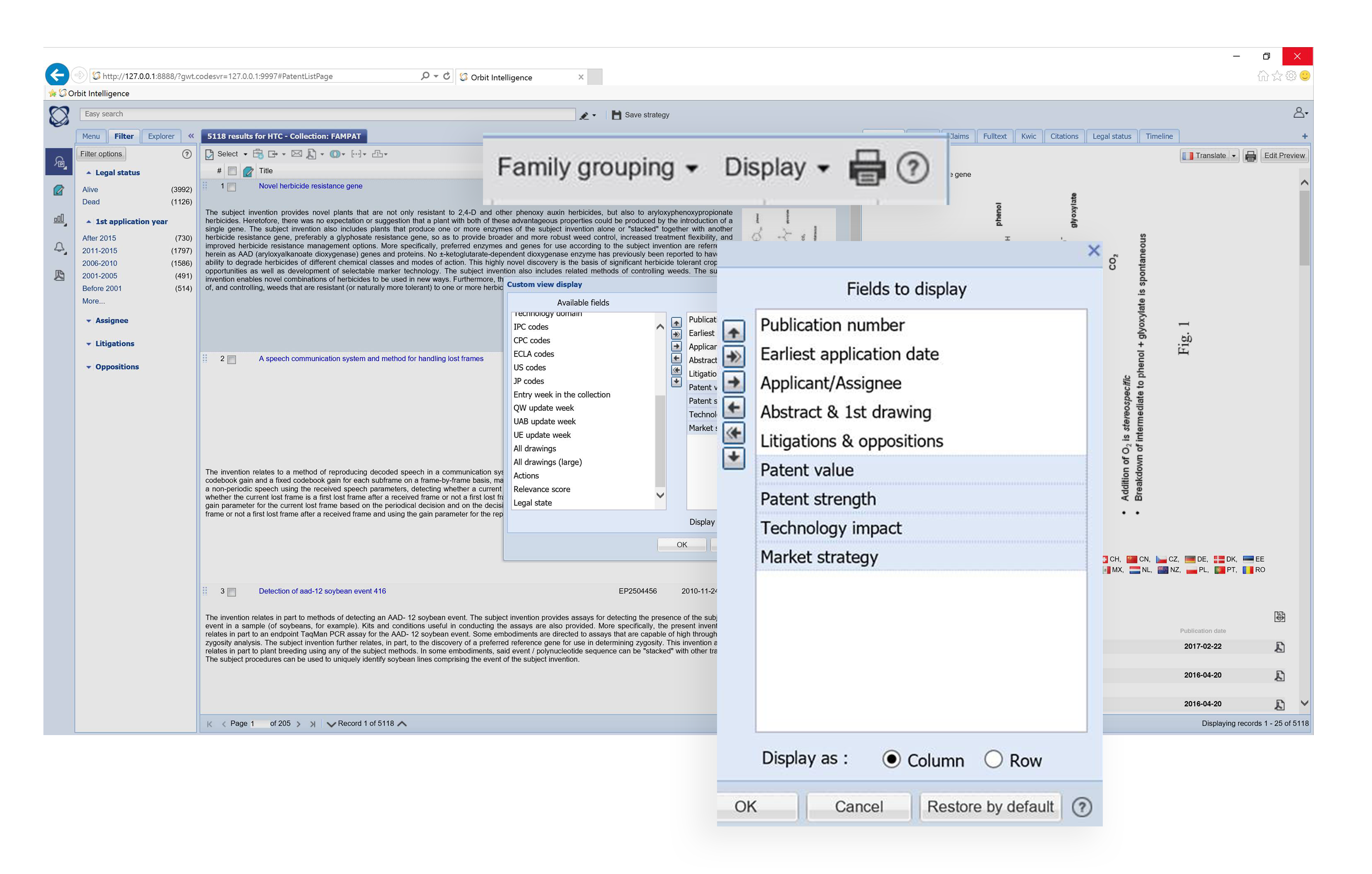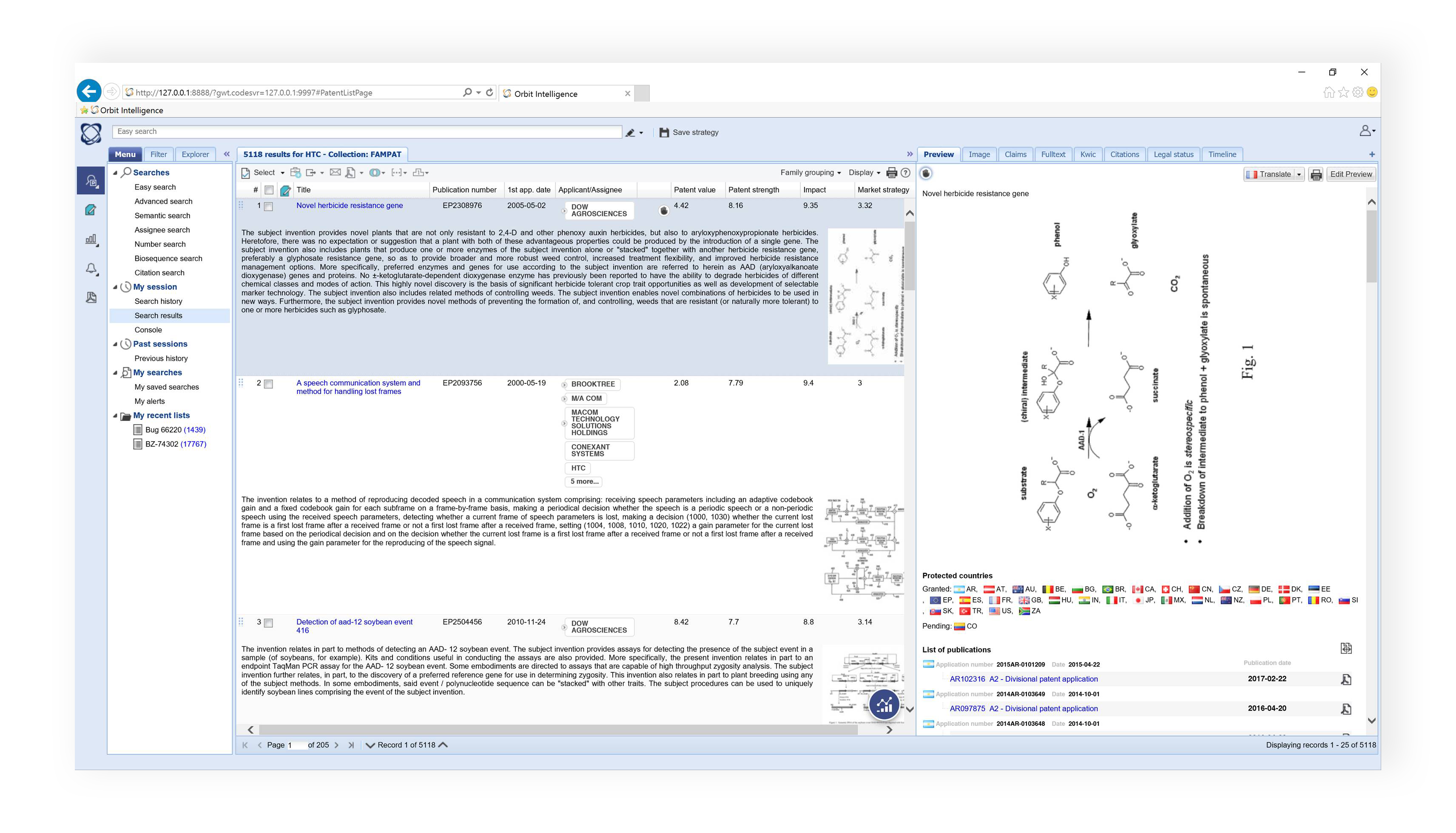
Patent value available directly in hitlist
You can now add the following patent values indexes to the hitlist.
- Patent strength
- Patent value
- Technology impact
- Market strategy
Once you have added these indexes to your hitlist you can sort your results so you can see the key patent first.
To customize your hitlist to include these new fields.
Select the “Edit” option from the “Display” menu in the toolbar. Then select the new indexes:

Click OK and the selected indexes will now be available in the hitlist. You can sort by clicking on the column headers:

Technology Impact
Score based on the number of forward citations received by the analyzed patent families, corrected to account for age and technical domain.
Results are normalized so that an average patent family has a score of 1, making it easy to identify whether the portfolio you’re analyzing scores above or below the average.
Market Strategy
Score based on the GDP of the countries where the analyzed patent families are granted or pending.
Countries with expired patent rights are kept in the calculation, as long as they were at one point granted. Questions like « Does my competitor tend to protect in a larger overall market than me? » can thus be answered.
Example 1 – patent family which was pending in the US but never granted and has now lapsed would not be included in the calculation.
Example 2 – patent family which was previously granted in the US but has since expired would be included in the calculation.
Patent Strength
Single score which combines the results of impact and market strategy indexes.
This new metric gives you a combined score which is available for both alive and dead patents. You can use it to answer questions like « Are my competitors patents generally stronger than mine? », « What were the strongest patents in my results set? »
Patent Value
Score based on the number of forward citations and the GDP of the countries where the analyzed patent families are granted or pending and remaining life of those patents.
The calculation is weighted based on the maximum possible remaining life of the patents within the family. Results are normalized so that an average scoring patent will have a patent value score of 1, making it easy to identify whether the patents you are analyzing score below or above average.